15 Fascinating Facts About Frogs You Probably Didn’t Know
Did you know not all frogs can jump? And they use their eyes to help them eat? These fun frog facts will give you a new appreciation for these amazing amphibians!
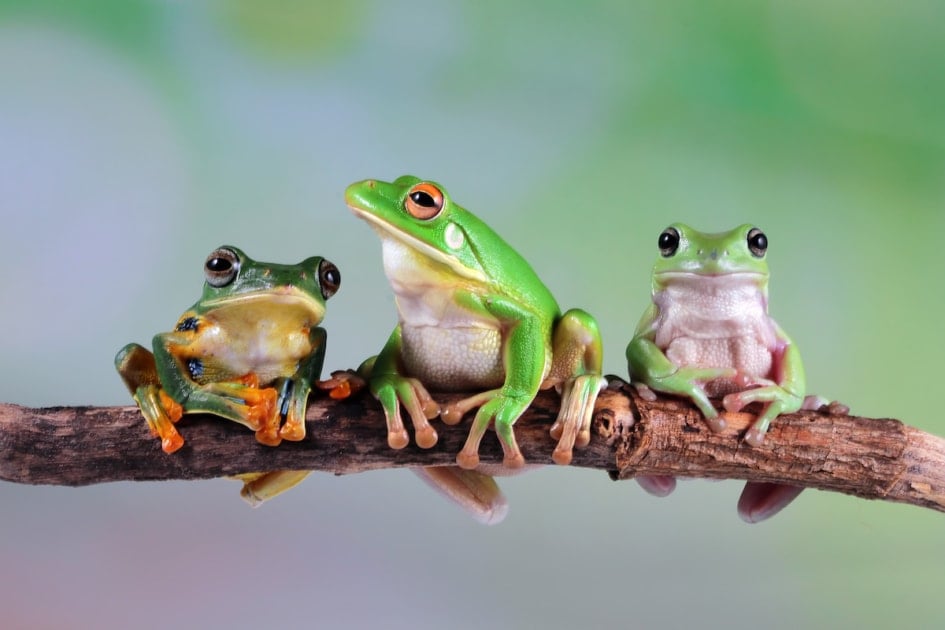
Unless one jumps in front of you, or you have ranidaphobia (fear of frogs and toads), you probably don’t give frogs much thought. Or maybe you make note of them in springtime when the peepers emerge from their frozen slumber and sing in their loud chorus. But how much do you really know about these amazing amphibians? These 15 frog facts will give you a new appreciation for them!
15 Frog Facts
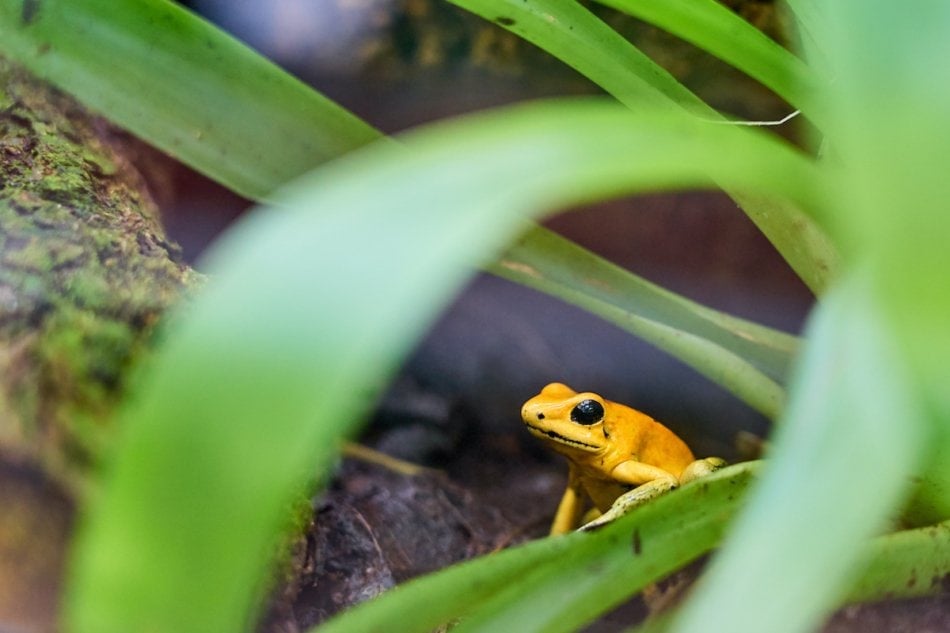
- Frogs live around the world, on every continent, except Antarctica.
- There are more than 6,000 species. These familiar amphibians are famous for their croaking sounds, leaping abilities, bulging eyes, and slimy skin. They live in and around still or slow-moving fresh bodies of water such as ponds, marshes, streams, lakes, or rivers.
- A group of frogs is called an army. Maybe it’s because they wear army green camouflage!
- Not all frogs are green. There are brilliant, colorful species in every color of the rainbow. Red, blue, orange, yellow, and purple. Some are multi-colored, with patterns, spots, or stripes. A frog’s coloration helps it survive by blending in with the environment or warning predators that it’s toxic (see #15). Their eyes vary in an array of colors and patterns, too. Most of the bright, colorful species are found in tropical regions.
- A frog’s bulging eyes allow it to see in front, sides, and partially behind it. The position of the eyes on its head gives them an almost 180-degree field of vision. Superior night vision enables these nocturnal creatures to hunt prey easily in the dark without moving.
- A frog can’t keep its eyes open when eating. That’s because they need them when consuming prey. According to the American Museum of Natural History, “When a frog swallows food, it pulls its eyes down into the roof of its mouth. The eyes help push the food down its throat.”
- Bullfrog calls can be heard up to a mile away! If you’re near a pond, lake, or other freshwater sources, listen for its distinct “brrr-ummmm” or “jug-o-rum” call.
- Each frog species has its own special call. Males croak during mating season to attract a female. The louder he croaks, the more likely he is to attract a mate.
- They have teeth! The small teeth on the roof of their mouths are not typically used to bite or chew; they keep the frog’s dinner from escaping before it’s had a chance to swallow it. However, if a frog feels threatened, or you hand-feed a pet frog, certain species have been known to bite.
- Frogs don’t drink water. These aquatic creatures absorb water through their skin.
- Not all frogs can jump. While most long-legged species can jump a distance greater than 20 times their body length, those with shorter back legs can hop, crawl, or walk.
- The South African sharp-nosed frog holds the world’s record for the longest jump. It jumped 44 times its body length. This 3-inch species leaped more than 130 inches. To match that, a five-foot-tall person would have to jump 220 feet in one leap.
- The world’s tiniest frog is the Paedophryne amanuensis. It’s about the size of a common housefly. It lives in leaf litter in the rain forests of Papua New Guinea.
- The biggest and heaviest frog on earth is aptly named the Goliath (see below). It grows up to 12.5 inches long and weighs about 7.1 pounds. It is found in the rainforests of Africa. It comes out at night and dines on fish, crabs, baby turtles, young snakes, and other vertebrates along the river’s edge. Its average life span in the wild is up to 15 years.
- The golden poison frog, native to Central and South American rainforests, has the distinction of being the most poisonous animal in the world, despite being about the length of a paper clip. Its skin secretes enough nerve toxin to kill 10 humans. Most poison frog species are colorful; the vibrant coloring warns predators to steer clear. Unlike most species, poison frogs are active during the day.
What’s The Difference Between Frogs and toads?
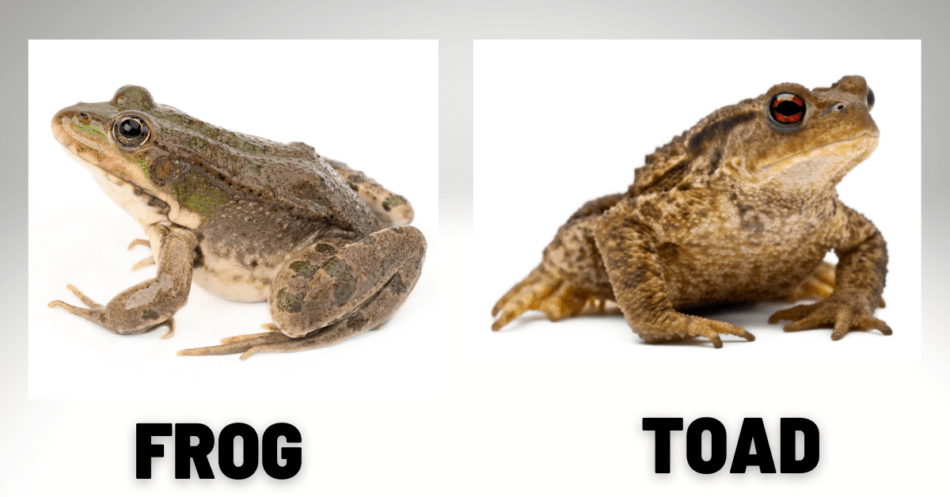
Ever wonder? Both belong to the Anura order but in different families. Frogs are generally aquatic, while toads live on land, near water. Frogs have smooth, wet skin. Toads have bumpy, dry skin. Frogs have teeth, but toads do not.
One More Thing
Ever wonder why frogs are drawn to the wet road after it rains? If you’ve ever been driving on a hot summer night after a heavy rain, you might catch them hopping right in front of your car. Why do they do this?
Frogs are drawn to the moist warmth of the pavement after it rains. During the daytime, the hot sun can be too drying for them, so the moist road is alluring.

Deborah Tukua
Deborah Tukua is a natural living, healthy lifestyle writer and author of 7 non-fiction books, including Pearls of Garden Wisdom: Time-Saving Tips and Techniques from a Country Home, Pearls of Country Wisdom: Hints from a Small Town on Keeping Garden and Home, and Naturally Sweet Blender Treats. Tukua has been a writer for the Farmers' Almanac since 2004.





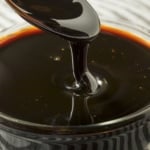

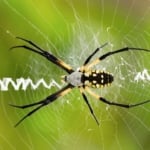
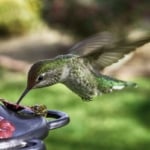


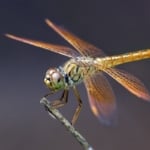
Love this
Love the information and the pictures, thanks. J
DO FROGS PREFER CLEAN WATER OR DIRTY WATER IN A POND?
lol this is the worst thing ive seen